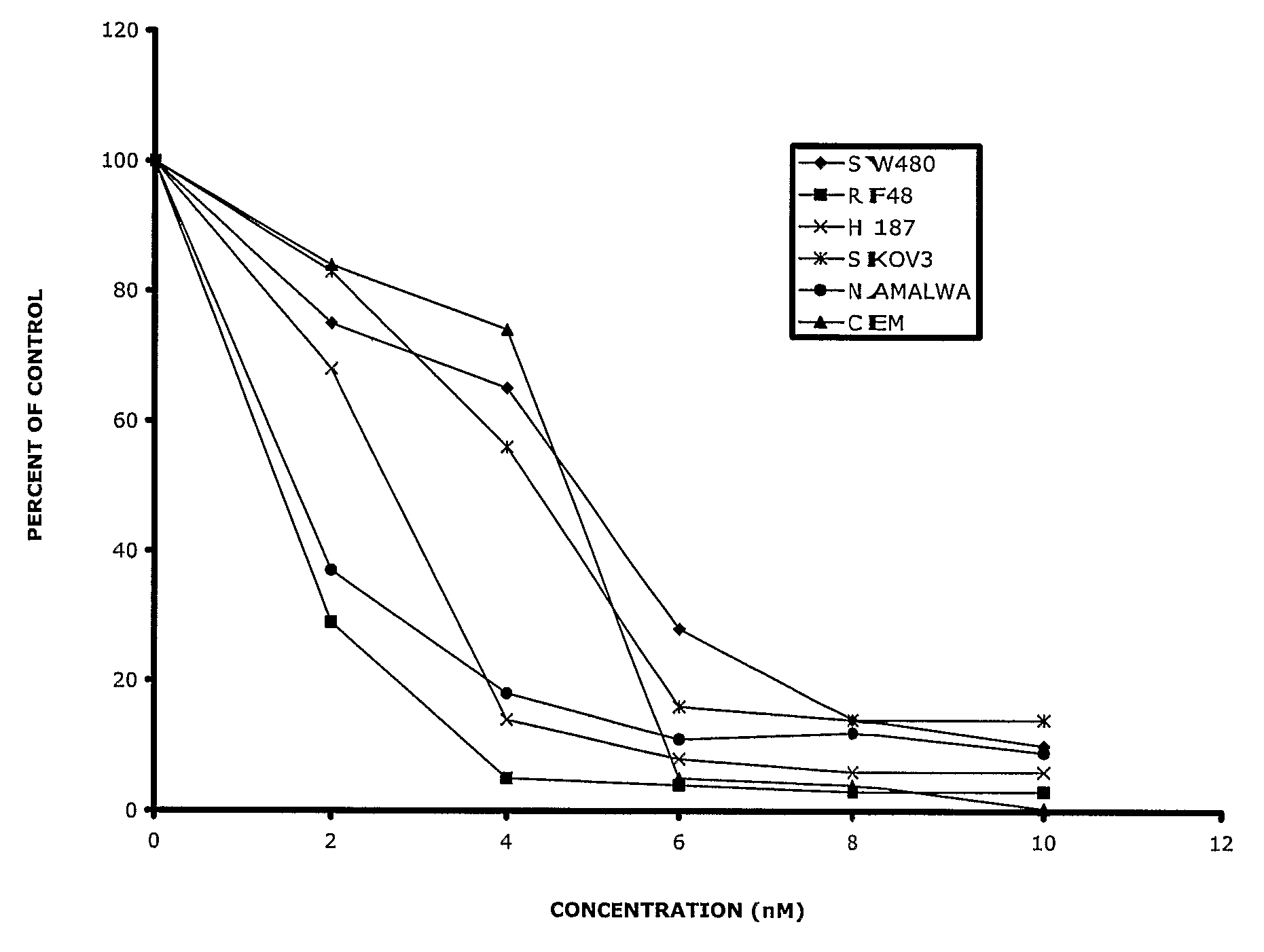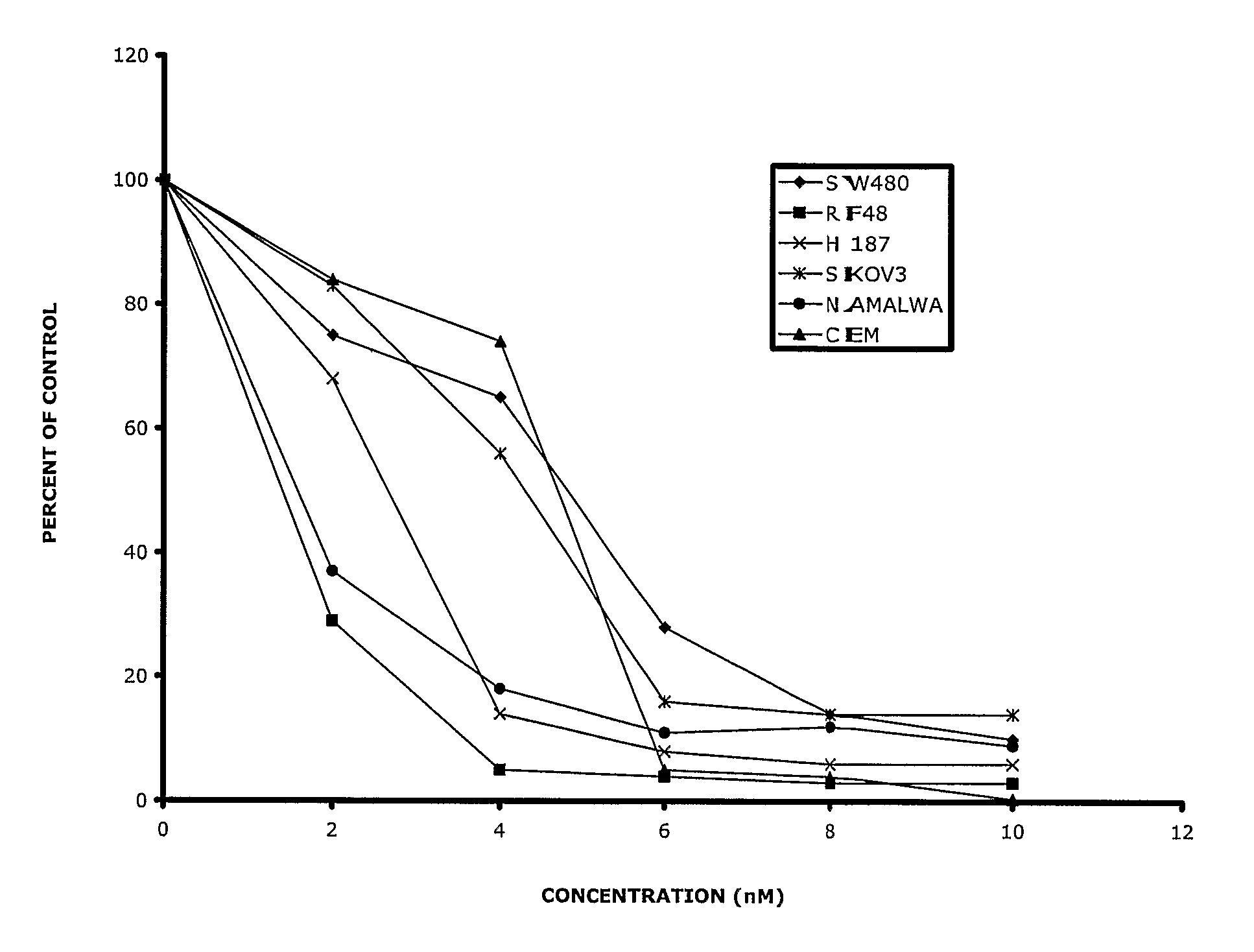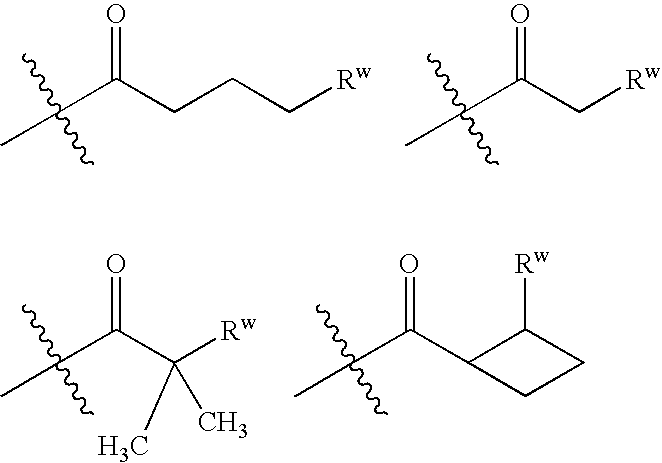Substituted Phenoxy-and Phenylthio-Derivatives for Treating Proliferative Disorders
a technology of proliferative disorders and derivatives, which is applied in the direction of phosphorous compound active ingredients, drug compositions, peptides, etc., can solve the problems of ionizing radiation having an adverse effect on cells and tissues, difficult (if not impossible) selectively administering therapeutic ionizing radiation to abnormal tissue, and normal tissue proximate to abnormal tissue is also exposed to potentially damaging doses of ionizing radiation
- Summary
- Abstract
- Description
- Claims
- Application Information
AI Technical Summary
Benefits of technology
Problems solved by technology
Method used
Image
Examples
example 1
Synthesis of (E)-5-((2,4,6-trimethoxystyrylsulfonyl)methyl)-2-methoxyphenol
A. 3-O-tert-Butyldimethyl silyloxy-4-methoxy benzaldehyde
[0568]To a cooled (0° C.) solution of 3-hydroxy-4-methoxy benzaldehyde (10 g, 65.7 mmol, 1 eq) in dry DMF (75 mL) was added DIPEA (16.99 g, 131.4 mmol, 2 eq). The mixture was stirred under nitrogen for 10 min. A 1.0 M solution of t-BDMS-Cl in THF (78.9 mL, 1.2 eq) was added dropwise over 30 min. The resulting mixture was stirred 12-16 h and monitored by thin layer chromatography (TLC). When the reaction was complete, water (75 mL) was (3×75 mL). The combined organic layer was washed with saturated aqueous sodium bicarbonate (75 mL) and water (75 mL) and dried (Na2SO4). Volatile components were removed in vacuo to yield the crude product. The crude product was purified by column chromatography on silica eluted with CHCl3 to afford the product (Yield; 26.75 g), 3-O-tert-butyldimethyl silyloxy-4-methoxy benzaldehyde, as a yellow oil.
B. 3-O-tert-butyldimeth...
example 2
(E)-5-((2,4,6-trimethoxystyrylsulfinyl)methyl)-2-methoxyphenol
A. 2-((3-hydroxy-4-methoxy-benzyl)sulfinyl)acetic acid
[0575]To a cooled (−5° C.) solution of 2-((3-hydroxy-4-methoxybenzyl)sulfanyl)acetic acid (2.9 g) in anhydrous DCM (15 mL) is added MCPBA (20 mmol, 50% concentration basis, Lancaster). The reaction mixture is stirred at −5° C. for 6 hours. The precipitated 3-chlorobenzoic acid is removed by filtration. The filtrate is washed with water, dried over magnesium sulfate and concentrated. After removal of the solvent, the product 2-((3-hydroxy-4-methoxy-benzyl)sulfinyl)acetic acid is purified either by crystallization or by silica gel chromatography.
B. (E)-5-((2,4,6-trimethoxystyrylsulfinyl)methyl)-2-methoxyphenol
[0576]A mixture of the 3-hydroxy-4-methoxy benzyl sulfoneacetic acid (7 mmol, 1 eq), 2,4,6-trimethoxybenzaldehyde (8.0 mmol, 1.1 eq), benzoic acid (0.15 eq) and piperidine (0.1 eq) in toluene (50 mL) is heated at reflux temperature for 2-3 h with continuous removal ...
example 3
(E)-5-((2,4,6-trimethoxystyrylsulfonyl)methyl)-2-methoxyphenyl dibenzyl phosphate
[0577]To a stirred solution of 5-((2,4,6-trimethoxystyrylsulfonyl)methyl)-2-methoxy-phenol (1.9 g, 4.8 mmol) in acetonitrile (24 mL) at room temperature, was added carbon tetrabromide (1.94 g, 1.22 eq) and triethylamine (0.728 g, 1.5 eq). The resulting mixture was stirred for 10 minutes and than cooled to 0° C. in an ice-water bath. Dibenzyl phosphite (1.51 g, 1.2 eq) dissolved in acetonitrile (16 mL) was added dropwise to the cooled reaction mixture. The reaction mixture was stirred for 2 h and monitored by TLC. The reaction was terminated by dropwise addition of aqueous potassium dihydrogen phosphate (10 mL, 0.5 M). The resulting mixture was extracted with ethyl acetate (3×30 mL). The combined organic extract was dried (Na2SO4) and concentrated in vacuo to yield the desired product.
PUM
| Property | Measurement | Unit |
|---|---|---|
| planar angle | aaaaa | aaaaa |
| 180° angle | aaaaa | aaaaa |
| 180° angle | aaaaa | aaaaa |
Abstract
Description
Claims
Application Information
 Login to View More
Login to View More - R&D
- Intellectual Property
- Life Sciences
- Materials
- Tech Scout
- Unparalleled Data Quality
- Higher Quality Content
- 60% Fewer Hallucinations
Browse by: Latest US Patents, China's latest patents, Technical Efficacy Thesaurus, Application Domain, Technology Topic, Popular Technical Reports.
© 2025 PatSnap. All rights reserved.Legal|Privacy policy|Modern Slavery Act Transparency Statement|Sitemap|About US| Contact US: help@patsnap.com



